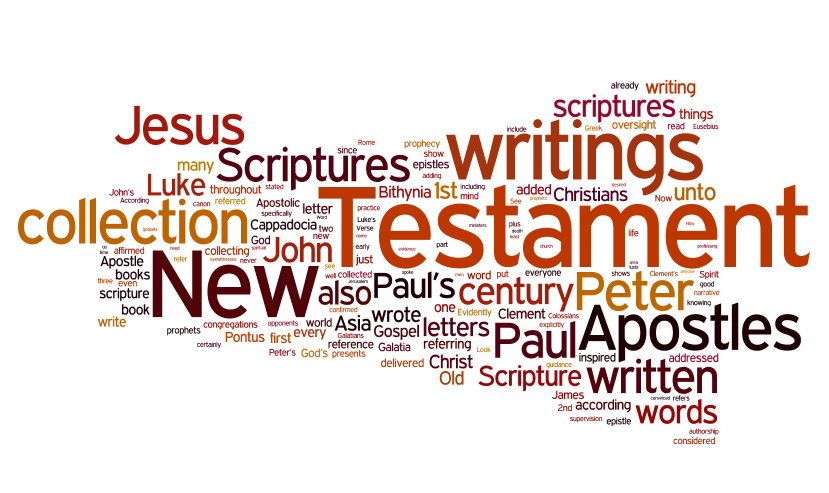
This is the sixth article write-up in the new blog series Encountering the New Testament.
Chapter Summary
- The author of the Gospel of Mark was John Mark, who worked with Peter and recorded his recollections of the life and work of Jesus.
- The Gospel of Mark was most likely written in Rome with a gentile audience in mind.
- The Gospel of Mark has as its central theme the story of Jesus.
- Mark focuses on the mystery of Jesus’ divine sonship, beginning with his baptism.
- In the Gospel of Mark, the divine reality of Jesus was apparent to everyone and everything except certain religious leaders.
- Mark emphasises the ministry of Jesus rather than his teachings.
- Jesus commanded many whom he had helped or told something significant to be silent about it.
Study Questions
1. Who was Mark?
Mark, full name John Mark, was one of the disciples of Jesus who worked closely with Peter to the extent that in 1 Peter 5:13, he was even called his “son”. According to Paul’s letter to the Colossians, Mark was a cousin of Barnabas and traveled with both, as recorded in Act 13:5. His interaction and relationship with Paul varied over time, given Paul was not happy that he returned to Jerusalem during the first missionary trip (Acts 13:13). However, this changed later on because Paul gave him high credentials when he advised Timothy to “get Mark and bring him with you, because he is helpful to me in my ministry” (2nd Timothy 4:11).
2. When was the Gospel of Mark most likely written?
When reconciling the information and historical records, it is thought that the Gospel of Mark was written whilst Peter was still alive, which was in the early 60s. The agreed range is a twenty-year period from the 40s through 60s. The source for this is Eusebius’ Historia Ecclesiastica (church history).
3. Describe how Jesus’ divine sonship is developed in Mark
Mark, in contrast to Matthew, emphasises Jesus’ divinity starting with reference to the Isaiah calling “Prepare the way for the Lord”. Building on this, Mark then gives attention to Jesus’ baptism where God reveals Jesus as His Son whom He loves. Even the evil spirits and demons recognise Jesus as the Holy One of God. Jesus then starts to act with authority and absolves people of their sins. Reading the hearts and thoughts of his critics further suggests Jesus definitely has a divine power. Jesus is proclaimed Lord of the Sabbath, which is highly offensive to the Pharisees who struggle with such a daring claim of divinity. As the evil lesser spirits accurate identify Jesus as the divine Son of God, Mark documents Jesus’ humility in silencing them. Jesus frequently demonstrates His divinity by performing miracles of healing and even having control over nature (the storm).
4. How do the “people” confirm that Jesus is the Son of God?
John the Baptist recognises Jesus as the highest authority because he says he is not worthy to baptise him. The people who Jesus heals recognise the authority with which He has healed them, including the demons who have possessed and tormented the various people. Even the natural elements provide confirmation that Jesus’ divinity is supreme. The reaction and general speechlessness of the disciples, and even the silenced Pharisees all provide support to the authority of Jesus.
5. In what ways was Jesus a servant?
Jesus’ ministry was portrayed as teacher-preacher and also as a miracle worker. When considering the teacher-preacher role, the Sermon on the Mount is arguably the most obvious example. Jesus also proclaimed the Kingdom of God here on earth, bringing this good news to the region. Even though the disciples called him rabbi, Jesus demonstrated his servitude in the teachings that the first would be last, and also in the tangible demonstration of washing the feet of the disciples. Healing was a big act of service that Jesus was constantly performing in the towns – and the demand and appeal of this was so overwhelming that he also
6. Why did Jesus command people to silence about his identity?
When Jesus healed the demons, he silenced them because of who they were – Jesus was thus disassociating himself from the evil spirits. This is consistent with the other example where a demon-posessed man was healed and Jesus instructed the man, who was now free of demons, to spread and share the miraculous healing – in this case the man was no longer demon-possessed so his own testimony would speak volumes for attesting to Jesus’ divinity.
In later periods of ministry, Jesus’ motivation for asking people to keep silent about the miraculous healings was an attempt to reduce the sheer overwhelming demand for healing. Wherever Jesus went, He found it increasingly hard to effectively preach and teach because the word nonetheless was spreading that Jesus could perform miracles of healing. The healing, whilst important, was only part of his holistic ministry so Jesus wanted the audiences of people to focus appropriately on the proclamation that the Kingdom of God was now here on earth, and was not merely about receiving healing.
In the third context, Jesus commanded the disciples to keep silent about his Sonship because this theology and teaching was not fully unveiled in their minds, so proclaiming His identity so early on would not have worked and confused people instead. Rather, the timing was wrong, particularly whilst Jesus was still yet to be crucified. Confirmation that Jesus approach and teaching that the disciples did not fully understand was shown in the reactions and confusion exhibited by the disciples during his death and resurrection. It was only with the help of the Holy Spirit that Jesus commissioned them to spread the Gospel.


You must be logged in to post a comment.